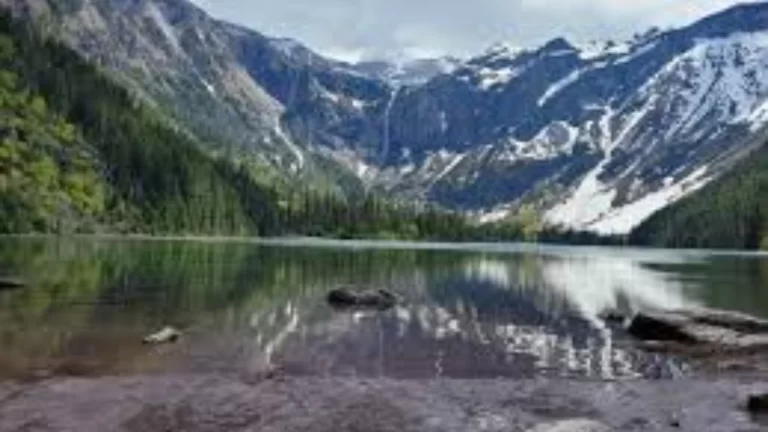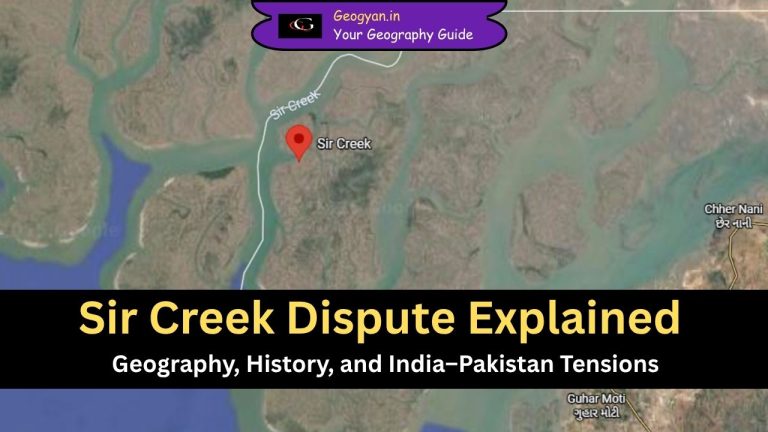Kenai Fjords National Park exists on Alaska’s dazzling southern shore between glacial landscapes and oceanfront while providing habitat for animals that inhabit nearby marine and terrestrial areas. Few national parks surpass Kenai Fjords National Park which occupies 600,000 acres to become Alaska’s most accessible and breathtaking natural attraction.
A Glacial Wonderland: Understanding the Park’s Formation
The creation tale of Kenai Fjords starts with vast freezing quantities. Harding Icefield stands as the majestic centerpiece of the park by covering 700 square miles of landmass because its glacial creations maintain approximate forty tidewater glaciers. The ice rivers have caringly reshaped the region throughout thousands of years into the deep U-shaped valleys which later became the park’s signature fjords.
The year 1980 established Kenai Fjords National Park through a purpose to protect its distinctive glacial features as 50% of its surface continues to be permanently covered by snow and ice. This frozen geographical realm demonstrates Earth’s previous time period while displaying geologic processes similar to those which created much of North America during the last ice age.
The Three Faces of Kenai Fjords
To truly appreciate the park’s diversity, it’s essential to understand its three distinct regions: Exit Glacier, the Harding Icefield, and the coastal fjords. Each area offers its own unique experiences and challenges, making Kenai Fjords a destination that caters to both casual visitors and seasoned adventurers.
Exit Glacier: The Gateway to Glacial Wonder
Exit Glacier stands as the park’s most accessible feature and serves as many visitors’ first introduction to a glacier. Located just outside the charming harbor town of Seward, this half-mile-wide river of ice is reached via the Herman Leirer Road – known locally as “Exit Glacier Road.” This accessibility makes it the perfect starting point for those wanting to experience the raw power of glacial ice up close.
The Exit Glacier Nature Center serves as the hub of activity in this area, offering educational programs, ranger-led tours, and crucial information about the glacier and surrounding ecosystem. The center’s knowledgeable staff helps visitors understand not only the glacier’s formation and movement but also its role in the larger ecological picture.
The Mighty Harding Icefield
The Harding Icefield represents one of America’s last great icefields and stands as a reminder of the ice age that once gripped this region. This massive expanse of ice serves as the park’s crown jewel, feeding dozens of glaciers that flow from its frozen plateau. For those willing to make the challenging trek, the Harding Icefield Trail offers one of Alaska’s most remarkable hiking experiences.
The trail, gaining approximately 1,000 feet of elevation over 4 miles, rewards hikers with breathtaking views of the icefield stretching to the horizon. This hike, while strenuous, provides a unique opportunity to witness the source of the park’s glacial features and understand the massive scale of this ice-age remnant.
The Coastal Fjords: Where Mountains Meet the Sea
The park’s coastal region presents a dramatic landscape where glacially carved valleys fill with seawater, creating deep fjords bordered by towering cliffs and active tidewater glaciers. This area, accessible primarily by boat, offers some of the park’s most spectacular scenery and wildlife viewing opportunities.
Wildlife Encounters: A Natural Paradise
One of Kenai Fjords’ greatest attractions is its incredible diversity of wildlife, both on land and sea. The park serves as a meeting point for terrestrial and marine ecosystems, creating unique opportunities for wildlife viewing throughout the year.
Marine Life
The nutrient-rich waters of the Gulf of Alaska support an amazing array of marine life. Visitors on boat tours might encounter:
- Whales: Humpback, gray, orca, minke, and fin whales frequent these waters, particularly during summer months
- Sea Otters: These charismatic mammals can often be seen floating on their backs, using their bellies as dining tables
- Steller Sea Lions: Large colonies can be found lounging on rocky outcrops
- Dall’s Porpoises: These playful creatures often bow-ride alongside tour boats
- Harbor Seals: Commonly spotted resting on floating ice near tidewater glaciers
Land Animals
The park’s terrestrial habitats support a diverse array of wildlife, including:
- Bears: Both black and brown bears roam the park’s forests and coastlines
- Mountain Goats: Often spotted on steep cliffs and rocky outcrops
- Moose: Frequently seen in forested areas and wetlands
- Other Mammals: Lynx, wolverines, porcupines, and marmots inhabit various park ecosystems
Birdlife
With over 190 bird species recorded, the park is a paradise for bird enthusiasts. Notable species include:
- Puffins: Both tufted and horned puffins nest in coastal cliffs
- Bald Eagles: Frequently spotted soaring overhead or perched in tall trees
- Seabirds: Common murres, cormorants, pigeon guillemots, and kittiwakes nest in large colonies
Activities and Adventures: Something for Everyone
Kenai Fjords National Park offers a wide range of activities suitable for various skill levels and interests. Here’s a comprehensive guide to the park’s most popular activities:
Boat Tours: The Classic Experience
Day cruises represent the most popular way to experience the park’s coastal wonders. These tours, ranging from half-day to full-day excursions, depart from Seward and offer visitors the chance to:
- Witness tidewater glaciers calving into the sea
- Spot marine wildlife in their natural habitat
- Explore remote fjords and bays
- Learn about the park’s geology and ecology from knowledgeable guides
Kayaking: An Intimate Adventure
For those seeking a more intimate connection with the landscape, kayaking provides an unforgettable experience. Whether joining a guided tour or arranging a water taxi drop-off, kayakers can:
- Paddle among icebergs in protected fjords
- Get closer to wildlife than possible on larger vessels
- Experience the scale of the fjords from water level
- Camp on remote beaches for multi-day adventures
Hiking: From Casual Strolls to Challenging Treks
The Exit Glacier area offers the park’s only maintained hiking trails, suitable for various skill levels:
- Glacier View Loop Trail: An easy one-mile loop offering excellent glacier views
- Harding Icefield Trail: A strenuous 8.2-mile round trip showcasing spectacular views
- Edge of the Glacier Trail: A moderate hike leading close to Exit Glacier
- Glacier Overlook Trail: A short but steep trail with panoramic views
Camping and Lodging: Overnight Adventures
For those wanting to extend their stay, the park offers several options:
- Exit Glacier Campground: The park’s only established campground, offering 12 walk-in sites
- Public Use Cabins: Three remote cabins available for rental
- Wilderness Camping: Allowed throughout the park with proper permits
- Wilderness Lodge: A private lodge accessible by boat during summer months
Planning Your Visit: Essential Information
Best Time to Visit
The prime visiting season runs from late May through September when most facilities are open and boat tours operate regularly. However, each season offers unique experiences:
- Summer (June-August): Peak season with longest daylight hours and most available activities
- Spring (May): Wildlife becoming active, fewer crowds
- Fall (September): Fall colors, possibility of northern lights
- Winter (October-April): Limited access, but excellent for winter sports around Exit Glacier
Weather Considerations
Kenai Fjords’ weather can be unpredictable, with conditions changing rapidly. Visitors should:
- Pack layers of clothing, including rain gear
- Bring sturdy, waterproof hiking boots
- Check weather forecasts regularly
- Be prepared for varying conditions
Access and Transportation
- By Car: Exit Glacier area is accessible via road from Seward
- By Boat: Most of the park is accessible only via water
- By Air: Flightseeing tours available from Seward
- Shuttle Services: Available to Exit Glacier area during summer
Conservation and Future Challenges
As with many natural areas, Kenai Fjords National Park faces various challenges in the modern era. Climate change particularly affects the park’s glacial features, with many glaciers showing significant retreat in recent decades. The Harding Icefield has lost approximately 10% of its surface area since 1950, serving as a visible indicator of our changing climate.
Visitors can help protect this unique environment by:
- Following Leave No Trace principles
- Staying on designated trails
- Maintaining proper distance from wildlife
- Supporting conservation efforts
- Educating others about the park’s importance
Conclusion: A Testament to Nature’s Power
Kenai Fjords National Park shows itself as Alaska’s premier natural wonder that permits observers to see glacial power up close while experiencing the varied life forms living in its distinctive landscape. Visitors to this park can choose between the nearby Exit Glacier along with its accessible rocks and ice formations or they can venture into the remote rocky shores of the coast.
Those who visit Alaska for the first time and experienced travelers can find memorable tours at Kenai Fjords National Park. When planning your trip to this glacial destination remember that you enter an active research domain which uses geology ecology and human progress to explain Earth’s past present and future state.
This exceptional wilderness environment operates as a play area for the adventurous while teaching about the significance of safeguarding natural treasures for upcoming generations. When you explore Kenai Fjords National Park you should observe both its breathtaking splendor together with its instrumental value for handling our transforming planet.





























